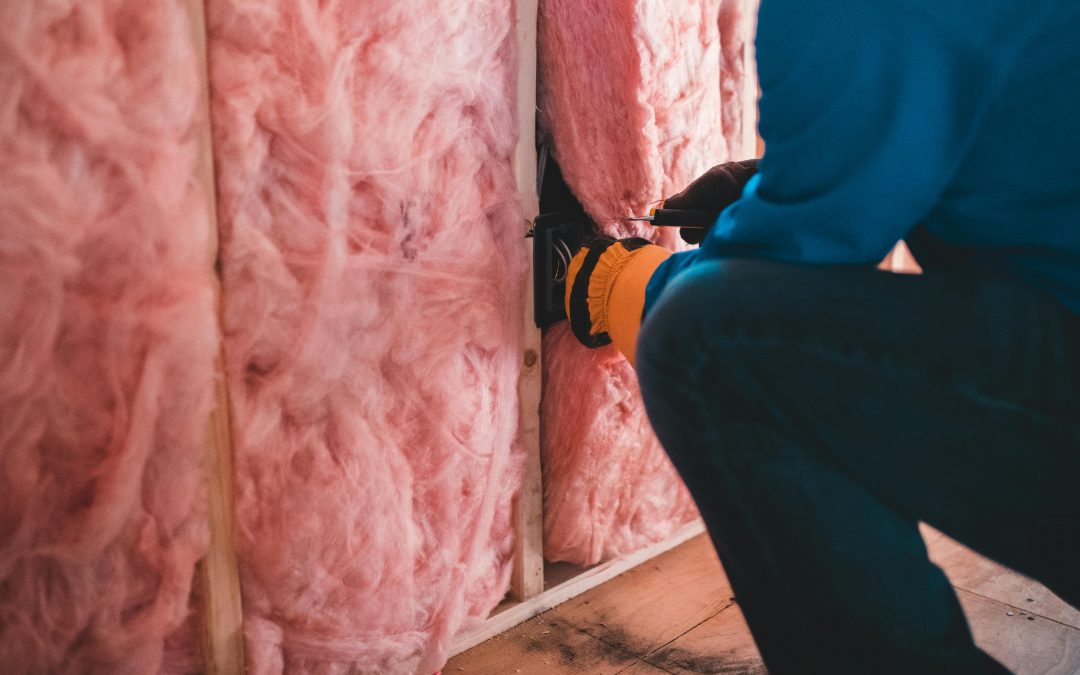In the age of resource conservation, CO₂ reduction, and the circular economy, recyclable insulation materials are becoming increasingly important in the construction industry. While conventional insulation materials such as polystyrene (EPS/XPS), mineral wool, or PU foams are often problematic to dispose of and recycle, sustainable alternatives rely on reusability, recyclability, or biodegradability. The good news: In terms of thermal insulation and versatility, they are hardly inferior to traditional materials.
Two main strategies: Bio-based vs. recycled insulation materials
1. Bio-based insulation materials made from renewable raw materials
These materials consist of natural fibers that are biodegradable or at least compostable. Commonly used raw materials:
-
Cellulose fibers (e.g., from recycled paper)
-
Wood fibers
-
Hemp
-
Flax
-
Sheep’s wool
-
Straw
These insulation materials usually have a thermal conductivity between 0.035–0.045 W/mK, which is slightly higher than traditional insulation materials such as EPS (approx. 0.032–0.040 W/mK), but still offer good insulation performance. They also score highly for their moisture control, sound insulation, and good environmental performance. Depending on the additives, biodegradation can occur within a few years.
2. Recyclate-based insulation materials made from plastic waste
These include insulation materials made from recycled plastics – e.g., PET insulation boards made from recycled beverage bottles or recycled EPS. These materials offer the advantage of closed material cycles and avoid plastic waste. Their insulation performance is comparable to conventional polystyrene (0.032–0.038 W/mK), often with a better CO₂ footprint.
For example, PET insulation boards not only exhibit good thermal insulation properties, but are also pressure-resistant, water-repellent, and permeable to vapor diffusion – ideal for roof, facade, and basement insulation.
Comparison of various insulation materials in terms of thermal conductivity, recyclability, and special features:
-
EPS/XPS (expanded or extruded polystyrene):
These classic foams have a very good thermal conductivity of approximately 0.032 to 0.040 W/mK. However, they are difficult or impossible to recycle and pose a disposal problem. Their excellent insulation value is an advantage; their environmental impact is a disadvantage. -
Mineral wool (e.g., glass or rock wool):
The thermal conductivity is approximately 0.035 to 0.045 W/mK. Partial recyclability is possible. Mineral wool is non-flammable but difficult to biodegrade. It is often used where fire protection is a priority. -
Cellulose or wood fiber:
These bio-based materials achieve thermal conductivity values of approximately 0.037 to 0.045 W/mK. They are biodegradable, permeable to vapor diffusion, and have a very good CO₂ balance. They are particularly popular in eco-friendly home construction. -
Hemp, flax, sheep’s wool:
Their thermal conductivity also ranges from approximately 0.038 to 0.045 W/mK. They are compostable and renewable. Their compatibility with building biology makes them ideal for interior construction. -
Recycled PET panels (e.g., from bottles):
These insulation materials have a thermal conductivity of approximately 0.032 to 0.038 W/mK – comparable to conventional foams. They are fully recyclable, dimensionally stable, water-repellent, and suitable for many applications in new construction and renovation.
Possible Applications in Construction
Recyclable insulation materials can be used in almost all areas:
-
Roof and rafter insulation (e.g., hemp, cellulose, PET panels)
-
Facade and exterior insulation (ventilated facades with wood fiber insulation)
-
Interior wall insulation (permeable natural fiber panels, e.g., flax or sheep’s wool)
-
Floor and ceiling insulation (e.g., wood fiber panels or recycled PET elements)
-
Filling and blown-in insulation (cellulose or straw)
Many products now also meet fire protection class B2 or even B1 and are free of additives that pose a health risk.
Conclusion
Recyclable insulation materials are more than just an ecological niche: They combine functional thermal insulation with ecological responsibility. Whether made from natural fibers or recycled plastics, they enable the transition to sustainable construction without any significant loss in insulation performance. With a growing market offering, funding programs, and rising demand for environmentally friendly materials, they are a real future topic for planners, developers, and the construction industry.
Sources and Literature
- Künzel, H. M., & Sedlbauer, K. (2008). Nachhaltige Wärmedämmstoffe im Bauwesen – Bewertung und Vergleich. Fraunhofer IBP, Bericht B30-2008.
- Schlegel, A., & Frischknecht, R. (2016). Ökobilanz natürlicher Dämmstoffe im Vergleich zu synthetischen Alternativen. KBOB, Schweiz.
- Künniger, T. et al. (2010). Recycling von Dämmstoffen im Bauwesen. EnergieSchweiz, Bundesamt für Energie BFE.
- Finnegan, M. A., et al. (2019). Comparative life cycle assessment of insulation materials for residential buildings. Energy and Buildings, 166, 547–559. DOI: 10.1016/j.enbuild.2018.03.030
- Institut für Bauen und Umwelt e. V. (IBU) (2022). EPDs für Hanfdämmstoffe, Holzfaserplatten und recycelte PET-Produkte – Umweltproduktdeklarationen nach ISO 14025.

Would you like to find out more or are you facing a specific problem?
Our expertise in modern production technologies and material applications makes us the ideal partner for your project. Whether consulting, feasibility assessment or technology transfer - we provide you with practical, scientifically sound and always strictly confidential support.

Chemistry at eye level
ChemSphere | Imprint & Privacy Policy | Copyright © 2025
ChemSphere | Imprint & Privacy Policy | Copyright © 2025
